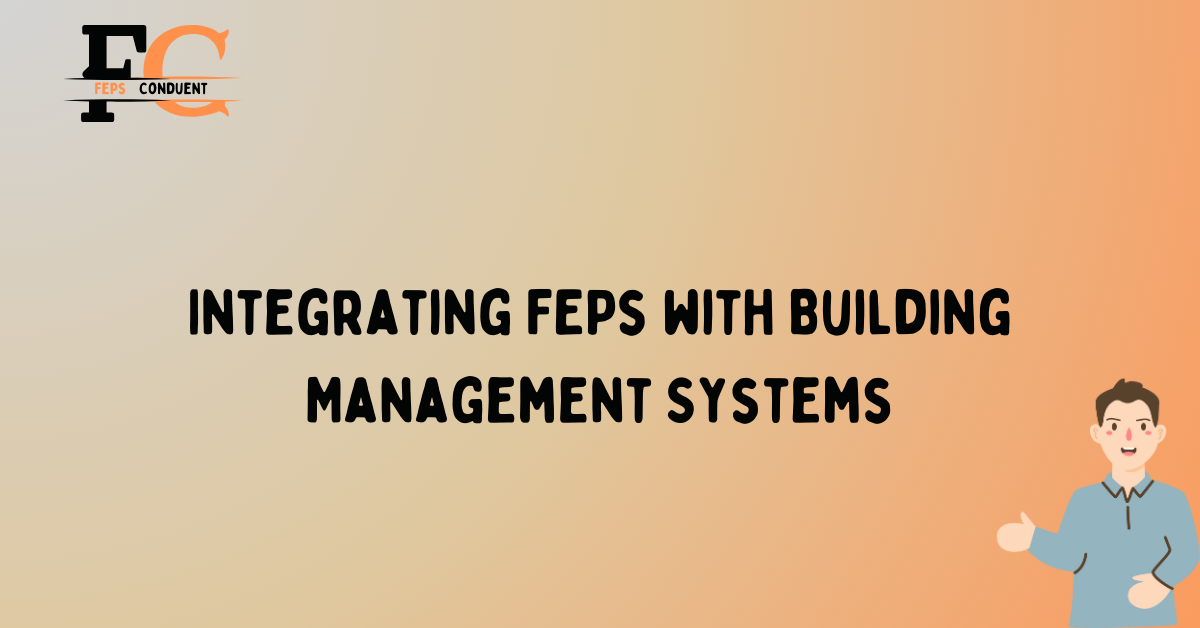Integrating FEPs with Building Management Systems

Integrating Facility Energy Performance (FEP) solutions with Building Management Systems (BMS) is a critical step towards achieving greater energy efficiency and sustainability in commercial buildings. With the rising importance of reducing energy consumption and greenhouse gas emissions, organizations are increasingly looking for ways to optimize their building operations.
By integrating FEPs with BMS, building owners and facility managers can gain real-time visibility into energy usage, identify areas of inefficiency, and implement targeted energy-saving strategies. FEPs provide advanced analytics and monitoring capabilities, allowing for continuous monitoring and optimization of energy performance. This integration enables proactive energy management, helping to reduce operational costs, improve occupant comfort, and minimize environmental impact.
Benefits of Integrating FEPs with BMS
Integrating Facility Energy Performance (FEP) solutions with Building Management Systems (BMS) offers numerous benefits to commercial buildings in terms of energy efficiency and sustainability. This section will explore the advantages of this integration.
Real-time Energy Usage Visibility
By integrating FEPs with BMS, building owners and facility managers gain real-time visibility into energy usage. This means they can monitor and track energy consumption patterns, identify areas of inefficiency, and make informed decisions to optimize energy performance.
Identification of Inefficiencies
Another advantage of integrating FEPs with BMS is the ability to identify areas of inefficiency within the building operations. FEPs provide advanced analytics and monitoring capabilities that can detect energy wastage, equipment malfunctions, or suboptimal settings. This information allows for targeted energy-saving strategies to be implemented, resulting in improved energy performance.
Continuous Monitoring and Optimization
Integrating FEPs with BMS enables continuous monitoring and optimization of energy performance. By constantly analyzing energy data, building owners and facility managers can proactively identify deviations from optimal energy usage and take corrective actions promptly. This proactive energy management approach ensures that the building operates at peak efficiency, reducing operational costs and improving energy performance.
Proactive Energy Management
Proactive energy management is a key benefit of integrating FEPs with BMS. With real-time visibility and continuous monitoring, facility managers can detect energy-related issues before they become significant problems. By addressing these issues promptly, energy waste can be minimized, and energy efficiency can be maximized. This proactive approach also helps in preventing equipment breakdowns and optimizing occupant comfort.
Cost Reduction
Integrating FEPs with BMS can lead to significant cost reductions for commercial buildings. By optimizing energy performance, operational costs related to energy consumption can be lowered. Proactive energy management also helps in avoiding costly repairs by detecting and addressing issues early on. Additionally, energy-efficient buildings are eligible for various energy-saving incentives and certifications, further reducing costs for building owners.
Improved Occupant Comfort
An often-overlooked benefit of integrating FEPs with BMS is the improvement in occupant comfort. By optimizing energy performance, the building’s heating, ventilation, and air conditioning systems can operate more efficiently, ensuring a comfortable indoor environment for occupants. This leads to increased productivity, satisfaction, and overall well-being of building occupants.
Environmental Impact Minimization
Lastly, integrating FEPs with BMS contributes to minimizing the environmental impact of commercial buildings. By reducing energy consumption and greenhouse gas emissions, buildings become more sustainable and environmentally friendly. This integration aligns with the growing importance of sustainability and helps organizations meet their environmental goals.
In conclusion, integrating Facility Energy Performance solutions with Building Management Systems offers numerous benefits. It provides real-time visibility into energy usage, identifies areas of inefficiency, enables continuous monitoring and optimization, facilitates proactive energy management, reduces costs, improves occupant comfort, and minimizes environmental impact. This integration is a critical step towards achieving greater energy efficiency and sustainability in commercial buildings.
FAQs
What are Building Management Systems?
Building Management Systems, or BMS, are computer-based control systems that automate and monitor the various mechanical and electrical systems in a building, such as HVAC, lighting, and security.
How can FEPs be integrated with Building Management Systems?
FEPs can be integrated with Building Management Systems by connecting them to the existing BMS infrastructure, allowing for real-time data exchange and centralized control of energy systems.
What are the benefits of integrating FEPs with Building Management Systems?
Integrating FEPs with Building Management Systems can provide greater visibility and control over energy consumption, leading to increased energy efficiency and cost savings. It also allows for better monitoring and analysis of energy data, enabling proactive maintenance and optimization of building systems.
Are there any challenges in integrating FEPs with Building Management Systems?
Yes, there can be challenges in integrating FEPs with Building Management Systems, such as compatibility issues between different software platforms, data security concerns, and the need for specialized expertise for setup and maintenance.
What are some best practices for integrating FEPs with Building Management Systems?
Some best practices for integrating FEPs with Building Management Systems include conducting a thorough assessment of the building’s energy systems, selecting compatible and reliable software platforms, ensuring proper data integration and validation, and providing training and support for building operators and managers.






